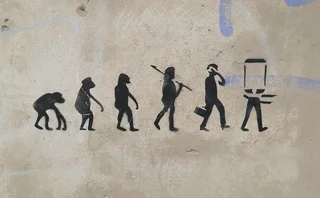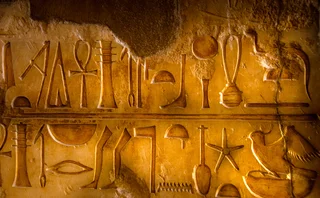Making A Central Foundation For Distributed Ledger
MUFG Canada Branch IT executive describes prerequisites for harnessing blockchain's potential

Corporate actions voting may not be the only application for blockchain technology (as Russia's central securities depository has discovered), beyond its original purpose of operating the Bitcoin currency. Bank of Tokyo Mitsubishi UFJ, whose innovation executive, Makoto Shibata, spoke to Inside Reference Data last month about the data demands created by blockchain, is looking at other uses for the distributed databases comprising the technology, according to Ron Lee, chief information and operations officer of MUFG Canada Branch, the new identity of the Canadian unit of Mitsubishi UFJ Financial Group (MUFG).
The impulse to centralize data, as well as functions such as settlements, money transfers, exchanges and the operations of capital markets overall, is undergoing a "paradigm shift" toward decentralization, according to Lee. MUFG Canada Branch does look to centralize its data, but is seeing that "blockchain technology has the capability to entirely revolutionize the industry," he says.
Separately, MUFG Canada Branch is consolidating multiple systems and architectures into what Lee says will be "a uniform, manageable and efficient footprint." The firm's centralization is being done to create a golden source of data to distribute to users and regulators, according to Lee. That source will include real-time or historical risk analysis, and portfolio credit determination and reporting.
"It is a complex and tremendous undertaking, especially when considering the requirements of this gathering effort," says Lee. "This may sound like any other large transformation, but what's extraordinary is being able to work with systems that are extremely tenured, seeing how their database schema intermingle and play with the structured and unstructured databases of today."
Although blockchain's decentralized nature is described in the common term ‘distributed ledger technology,' centralization is necessary for firms like MUFG Canada Branch to work with the data that is already "in front of us," says Lee. "Adoption of blockchain technology relies on function, standardization and membership to be meaningful and successful," he adds, answering why some centralization and consolidation is a pre-requisite for blockchain efforts.
Cloud Resources' Role
Blockchain can be paired with cloud resources, Lee says. He speaks from experience, having designed and implemented a private cloud for capital markets in 2003. In 2011, he observed that cloud technology was increasingly being touted as trustworthy for financial services.
A pairing of cloud and blockchain must be able to satisfactorily address three basic questions: where data is, who can access and control the data, and whether data is safe, according to Lee. "At first you may think that blockchain and cloud go hand-in-hand, like they were meant for each other," he says. "A cloud is essentially a network of identified servers that are connected to each other that process, manage and store data. But blockchain can forego that connection, make any server or personal workstation a part of that group, so long as it has the appropriate cryptographic function.
"If data management can answer these fundamental, age-old questions, then cloud will be extremely important to blockchain, as it will provide an inroads to anyone who wants to decentralize and transaction," adds Lee. "Or perhaps we don't need to answer these questions. Maybe we should ask new ones since the paradigm we're so used to will shift drastically as technologies continue to evolve and merge."
Risk Data Applications
The centralization and consolidation of data that can be useful to prepare for blockchain operations or applications, can also be a foundation for compliance with the global BCBS 239 risk data aggregation principles, as Lee sees it.
"No longer will disparate reporting work for liquidity or counterparty credit risk, trading or market exposures, as we need to know and report the total risk that the bank is exposed to, period," he says. "It's not surprising that many of us, whether in Canada or around the world, are looking at how to deal with this aggregation, manipulation, calculation and reporting of data."
Blockchain technology may even be applicable for BCBS 239 compliance purposes, Lee adds, but that has yet to be determined.
Only users who have a paid subscription or are part of a corporate subscription are able to print or copy content.
To access these options, along with all other subscription benefits, please contact info@waterstechnology.com or view our subscription options here: http://subscriptions.waterstechnology.com/subscribe
You are currently unable to print this content. Please contact info@waterstechnology.com to find out more.
You are currently unable to copy this content. Please contact info@waterstechnology.com to find out more.
Copyright Infopro Digital Limited. All rights reserved.
As outlined in our terms and conditions, https://www.infopro-digital.com/terms-and-conditions/subscriptions/ (point 2.4), printing is limited to a single copy.
If you would like to purchase additional rights please email info@waterstechnology.com
Copyright Infopro Digital Limited. All rights reserved.
You may share this content using our article tools. As outlined in our terms and conditions, https://www.infopro-digital.com/terms-and-conditions/subscriptions/ (clause 2.4), an Authorised User may only make one copy of the materials for their own personal use. You must also comply with the restrictions in clause 2.5.
If you would like to purchase additional rights please email info@waterstechnology.com
More on Data Management
An inside look: How AI powered innovation in the capital markets in 2024
From generative AI and machine learning to more classical forms of AI, banks, asset managers, exchanges, and vendors looked to large language models, co-pilots, and other tools to drive analytics.
As US options market continued its inexorable climb, ‘plumbing’ issues persisted
Capacity concerns have lingered in the options market, but progress was made in 2024.
Data costs rose in 2024, but so did mitigation tools and strategies
Under pressure to rein in data spend at a time when prices and data usage are increasing, data managers are using a combination of established tactics and new tools to battle rising costs.
In 2025, keep reference data weird
The SEC, ESMA, CFTC and other acronyms provided the drama in reference data this year, including in crypto.
Asset manager Saratoga uses AI to accelerate Ridgeline rollout
The tech provider’s AI assistant helps clients summarize research, client interactions, report generation, as well as interact with the Ridgeline platform.
CDOs evolve from traffic cops to purveyors of rocket fuel
As firms start to recognize the inherent value of data, will CDOs—those who safeguard and control access to data—finally get the recognition they deserve?
It’s just semantics: The web standard that could replace the identifiers you love to hate
Data ontologists say that the IRI, a cousin of the humble URL, could put the various wars over identity resolution to bed—for good.
The art of communication: Data pros need better messaging
As the CDO of a tier-one bank puts it, when there’s an imbalance in communication between the data organization and the business (much less other technology heads) “that creates problems.”








